The Carolina Sandhills bays
The Carolina bays do, of course extend across the boarder into South Carolina. Our discussion here is focused on the area above the coastal plain, were the bays are rare. We propose that this is due to the higher relief of the landscape, which had caused most of the deposited ejecta to drape over hills and wash into the valleys, and did not allow formation of the burst-bubble landform. That is, excepting in any given area of level terrain. Using LiDAR imagery within Google Earth's virtual globe, we have extended the range of Carolina bays back into the Carolina’s, above the fall line, by locating those level areas.
The term “Sand Hills” has been applied to this area just above the Orangeburg Scarp, where the Middle Coastal Plain meets the Upper Coastal Plain. The bays are not numerous, but at least one researcher has noted the similarity of what is locally referred to as “Bean Dips” to the proper Carolina bay. And, again the sand is enigmatic: No fossils!
The following graphic depicts some of the bay fields identified along the NC-SC State line. Mark Twain once said “History Does Not Repeat Itself, But It Sure Does Rhyme”. Much the same could be said about these oval basins.
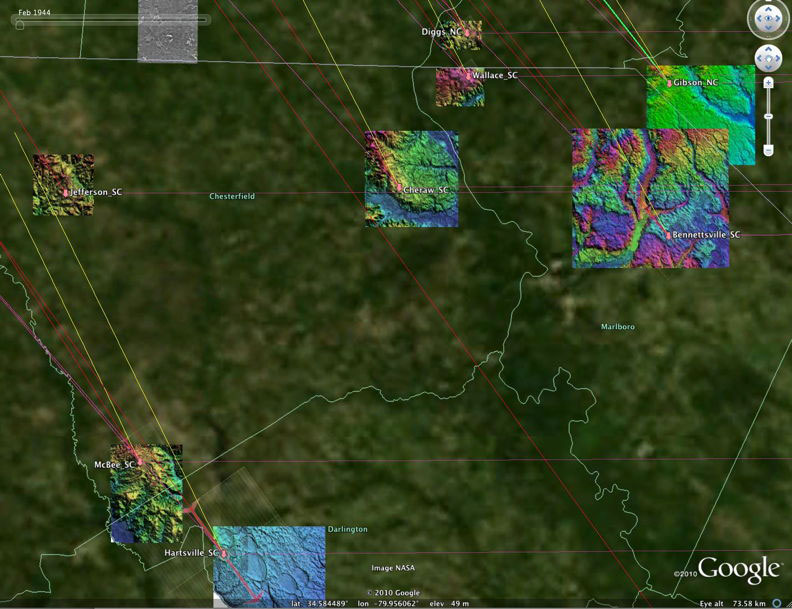
Here are sample bays, both in standard Goggle Earth Imagery, and with the LiDAR DEM color-ramp image superimposed on the virtual globe. They are displayed in order of increasing altitude, eventually reaching 139 meters (460 feet) above sea level. Given the very shallow relief of these landforms, little of their structure can be seen in the visual imagery, although the LiDAR images the oval planforms, leaving little doubt about their relationship to the bays further towards the coastline.
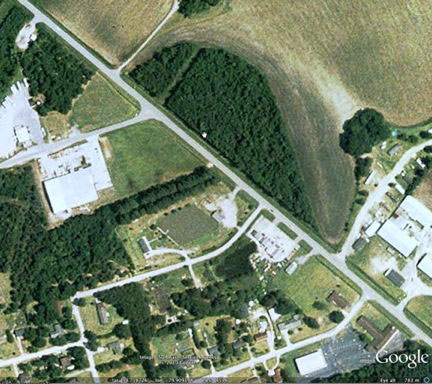

45 Meters Elevation Cheraw, SC


60 Meters Elevation Cheraw, SC
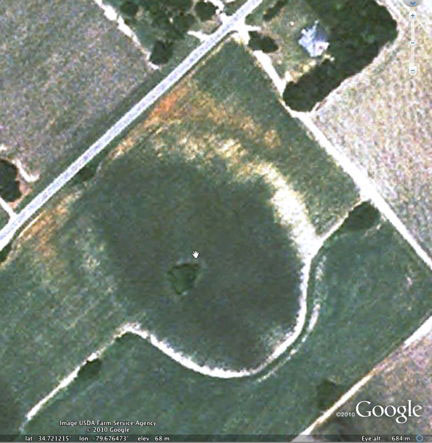

68 Meters Elevation Bennettsville, SC
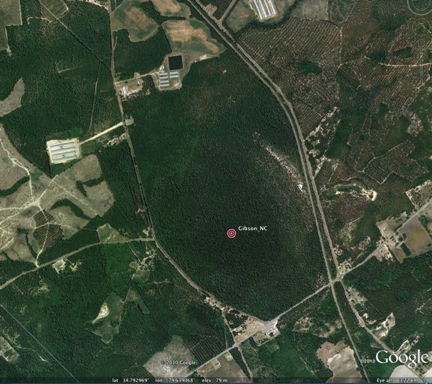
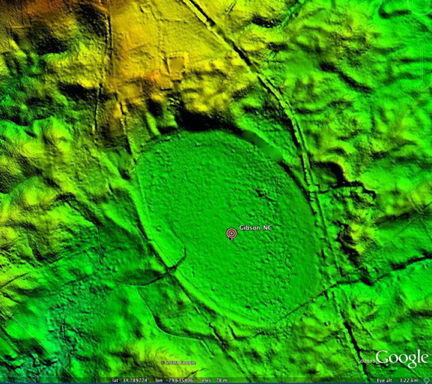
78 Meters Elevation Gibson, NC


93 Meters Elevation Wallace, SC
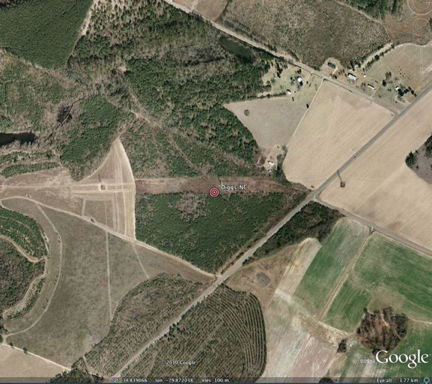

100 Meters Elevation Diggs, NC
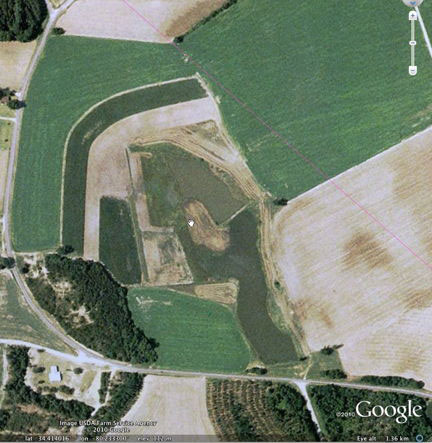
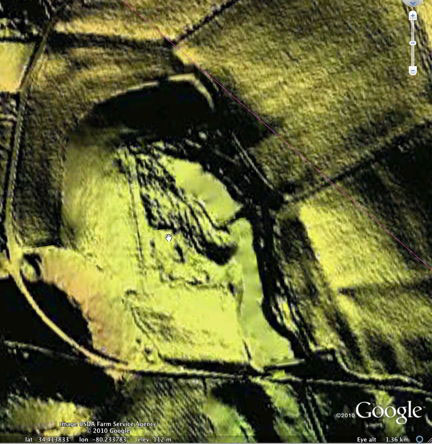
112 Meters Elevation McBee, SC
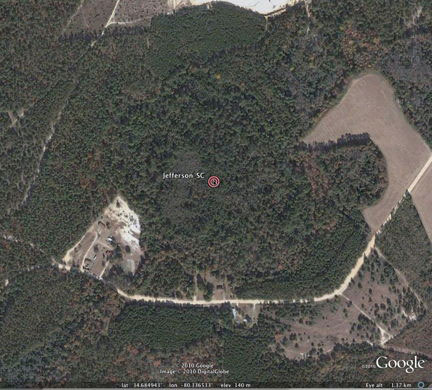
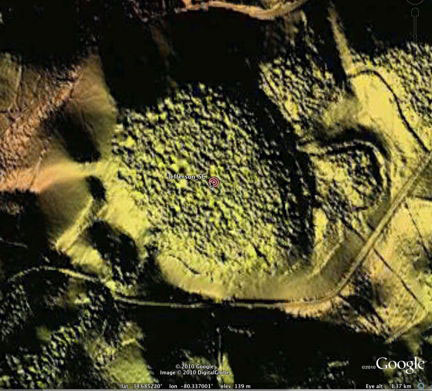
139 Meters Elevation Jefferson, SC
* Legumes In Loamy Soil Communities Of The Carolina Sandhills Their Natural Distributions And Performance Of Seeds And Seedlings Along Complex Ecological Gradients, Master’s Thesis, UNC Chapel Hill, 2000


